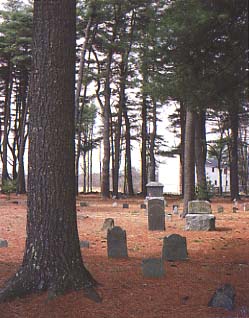by Marya Danihel
New Hampshire Profiles, July 1988

Life’s a beach. On a typical midsummer day, 150,000 beach-goers soak up Hampton’s surf and sun
There are staggering contrasts to be seen in Hampton. At the beach, while tourists’ cars crawl along in search of a parking space, dapper policemen on horseback keep order on the sand. An unmarked stone stands as an apologetic memorial to Eunice “Goody” Cole, who was persecuted for witchcraft. A short distance away, enormous signs tout fried dough and condominium sales. From Landing Road, the salt marshes look much as they must have when the first settlers landed – except for the monstrous domes of Seabrook nuclear power station in the distance. An uneasy marriage of growth and preservation is the quintessence of Southern New Hampshire these days, and nowhere is this more dramatically embodied than in Hampton.
Like nearby Exeter, the town celebrates its 350th birthday this year, and is in the middle of a full calendar of ceremonies that run the gamut from the reverent to the ridiculous. One of the first events of the year was an ecumenical service held in January at the First Congregational Church on Winnacunnet Road; this was fitting, as it was the Rev. Stephen Bachiler’s little band of God-fearing Puritans from Southampton, England, who first came to this spot in 1638 seeking the freedom to practice their religion.
For more than 200 years after that first landing, the government of the town and the government of the First Congregational Church were one. So central was religion to the lives of the settlers that they built the first log meetinghouse before they finished their own dwellings. The present meetinghouse is the sixth, but the real link with history is through the congregation itself, the oldest continuous one in the United States.
Winnacunnet Road derives from the Native American Winicowett, meaning “Pleasant Place of Pines.” The settlers originally took the name Winnacunnet for their town, but less than a year after its incorporation, the name was changed, perhaps to honor Southampton, the Puritans’ place of origin.
Of the events in Hampton’s history, none has received as much attention as the persecution and posthumous “rehabilitation” of Goody Cole. Goody and her husband William arrived in Hampton in 1640, and between then and 1656, when Goody was charged with witchcraft, she was in and out of court many times, quarreling with neighbors. From the charges of “slanderous speeches” and the records of arguments concerning livestock and property, we may deduce that Goody Cole was, at the very least, a disagreeable woman. At most, she may have been mentally ill, and in any case she lacked the good sense to refrain from cursing neighbors or openly rejoicing at their misfortunes.
Misfortunes in those days were plentiful. Deaths of livestock and infants were common in this harsh new land, as were drownings. The Coles had a well that, unlike many others, never turned brackish. Envy and dislike, exacerbated by overwork and fear of the devil, culminated in accusations of witchcraft against Goody Cole in 1656, when she was in her 70s. The cruel treatment that ensued included flogging and imprisonment. Perhaps worst of all, when she returned to Hampton after a 15-year absence, Goody Cole was again accused and imprisoned. Two years later, she was released to Hampton once more and died as a ward of the town.
In 1937 some citizens of Hampton began to seek ways to ameliorate this tragedy, and at Town Meeting in 1938, an article was passed declaring Goody Cole unjustly accused, restoring her “rightful place as a citizen of the Town of Hampton.” The story appeared in nearly every newspaper in this country and England, and inspired countless editorials and sermons.

In lieu of numerals, the clock on the tower of Odd Fellows Rockingham Hall has “Memorial Gift” on its face. John Thomas Brown of Newburyport, Mass., donated the clock in 1897
Like many old New Hampshire towns, Hampton originally comprised much more territory than it does today. Hampton Falls, North Hampton, Kensington, East Kingston and Danville once lay completely within Hampton’s borders, as did portions of the towns of Sandown, Kingston, Seabrook and Rye. However, Hampton retained the lion’s share of the coastline throughout these divisions – about half of the state’s total of 16 or so miles – and it’s the beach that has had the biggest impact on the town.
“In the summer, it’s the generator that runs the town’s economy,” says Robert Herbert, editor of the Hampton Union for the last 13 years. “It makes Hampton a jauntier town than others in the Seacoast area; Hampton still has the feeling of a resort town even in winter.”
“I think the worst thing that ever happened to this town is winter rentals,” says Roland Paige, who has lived most of his 77 years in Hampton. Paige is one of the lynchpins of community life, involved with the Boy Scouts, the Tuck Museum and many other organizations. He deplores the intensive development along the beach, and would like planning and zoning boards to have more authority. “Before World War II, everybody had a little land of their own. Now there’s only one farm left in the town of Hampton.”
Still, even at the beach, there are some survivors from bygone days, notably Ashworth By The Sea, a resort hotel originally built in the 1920s and recently expanded to include a lounge and more rooms. The Hampton Casino, which in Paige’s youth featured dance bands led by Harry James and Tommy Dorsey, now presents big-name country and rock bands. The Casino is also host to another old-fashioned institution, the “Miss Hampton Beach Pageant.” The top award is $500 cash, and, yes, there is a bathing suit parade.
The influx of “summer people” helps support an increasingly endangered species: resident professional summer entertainment theater. Many live theaters in resort areas now book “packaged” shows assembled and rehearsed in New York, but the Hampton Playhouse still produces its own offerings. This year is its 41st, and as usual, well-known actors from television and films will be working alongside young, unknown professionals, with locals occasionally taking bit parts. “It took us awhile to get supported by the town,” says Al Christie, who has been with the Hampton Playhouse “almost since the beginning”; but now the Playhouse has been woven into the fabric of the community.
Other summer attractions include deep-sea fishing boats that depart from Hampton’s two piers and, of course, the sand and surf itself. Hampton has three state beach facilities. North Beach and Seashell Beach are in the center of all the action. The latter has a band shell, first-aid services and a Chamber of Commerce booth. Hampton Beach State Park is at the southern end of town, away from the resort area, and has a large public area and a public dock.
When summer madness subsides, the place to look for the life of the town is toward the center, where Lafayette Road behaves itself for a few blocks before turning back into Route 1. The landmark everyone uses to give directions is Lamie’s, an “Inn and Tavern” in operation for more than 50 years. Newcomers to the area identify themselves immediately by referring to this establishment as “lay-me’s,” or “lammey’s,” affording much amusement to those in the know, who say “la-may’s.” Lamie’s is open year-round and has many special events in the summer. This year they’ll host a banjo workshop on July 16 and 17 and will continue the tradition of singalongs in the Crackerbarrel Lounge with Charlie Bradshaw.
Just south of Lamie’s on the other side of the road is the place to go for coffee, doughnuts, politics and discussions of the morning’s news – The Honey Bee. This sometimes means talking about Seabrook Station. Hampton Union editor Robert Herbert has seen public opposition to Seabrook grow considerably in the last few years and cites as evidence the fact that the town is spending a fair amount of money to fight the plant in court. Opponents of Seabrook say the beach, which attracts as many as 250,000 people in the height of summer, couldn’t possibly be quickly evacuated in an emergency. Roland Paige, on the other hand, says he “would like to see Seabrook go on line tomorrow.” According to his Yankee philosophy, one should get something back from an investment. “And I don’t own any stock in it, either.” He says with a laugh.
Jerry McConnell, chairman of the 350th Anniversary General Committee, characterizes Hampton this way: “When I first came here in 1957, Hampton seemed like such a warmhearted small town. At that time Helen Hayden was the town clerk, and she made you feel as if you were being cared for by your mother. In spite of the growth, the friendly atmosphere prevails. “One of the final events of this celebration year will be the placing of a time capsule, intended for opening 100 years hence. Many time capsules are filled mostly with mute objects; the sociable people of Hampton intend to fill theirs with videotapes. Any resident who cares to stop by the library when the video camera is set up may record a two-minute message for posterity. Perhaps those descendants will also be able to say, “In spite of the growth, the friendly atmosphere prevails.”
[2004 Update: Neither the time capsule nor the video were ever made.]
